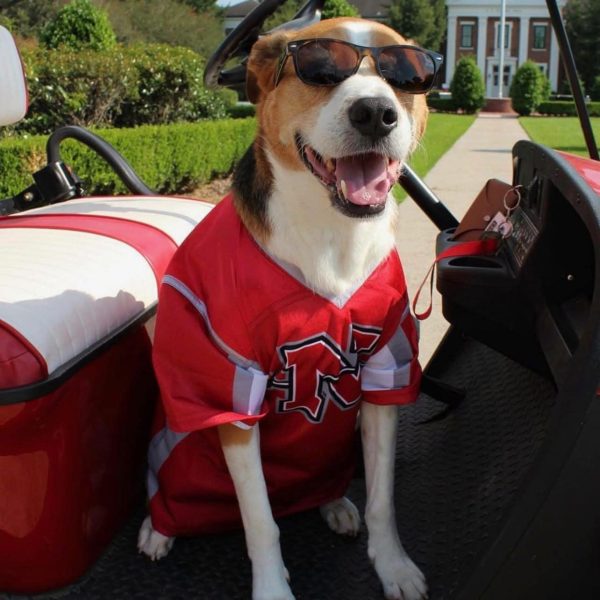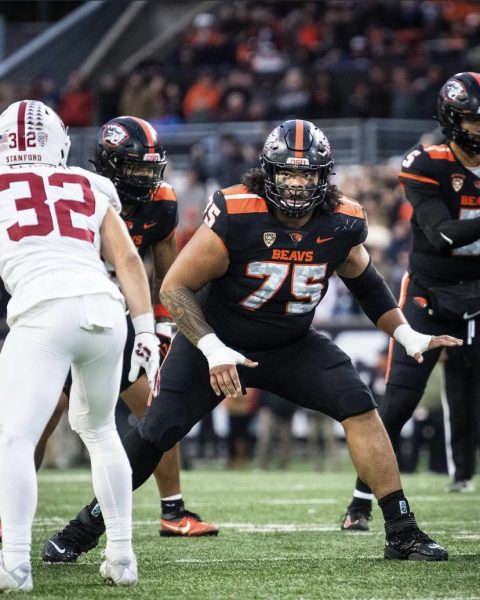A live tiger should be a continued tradition at LSU
When Louisiana State University’s beloved live mascot, Mike The Tiger was diagnosed with spindle cell sarcoma, PeTA demanded for the University not to have any more live tigers after Mike VI.
In a letter received by LSU, People for the Ethical Treatment of Animals said, “all captive big cats suffer psychologically when they are subjected to confinement, discomfort and stress.” While I understand the concern for the tiger, I believe that Mike is in the safest place for a tiger and LSU should continue the tradition of having a live mascot after Mike VI.
Mike is residing in a $3 million 15,000 square-foot habitat enclosed with plants, a large live oak tree and a beautiful waterfall that leads into a wading pond. Mike is often found in his yard napping in the afternoons or playing with a giant ball in the mornings. The average lifespan for a tiger in the wild is about 8-12 years. A tiger in captivity can live 14-18 years. He is cared by the LSU School of Veterinary Medicine, which is the no. 18 ranked public vet school in the country.
The cancer is rare, inoperable and a form of terminal cancer. It is also the first diagnosis of spindle cell sarcoma in a tiger. An LSU Vet student first noticed the tumor when it started displacing the tiger’s right eye. According to David Baker, Mike’s Veterinarian, there are five similar tumors that have been discovered in tigers but none were treated. Mike is receiving the first-of-its-kind stereotactic radiotherapy treatment at the Mary Bird Perkins Cancer Center in Baton Rouge. The treatment is not curative but it should extend the tiger’s life and allow him to live comfortably. Without treatment Mike could live one to two months, but he could possibly live another one to two years with treatment. So far Mike has been doing well after all of his treatments. Veterinarians were quick to point out that it appears Mike is not in any pain and continues his daily routine eating and sleeping.
The tradition of Mike started in 1934 when the then University’s Athletic Director T.P. Heard and other LSU leaders decided to buy a real tiger from the Little Rock Zoo. They raised $750, collecting 25 cents from each student to purchase the first two hundred pound tiger. After Mike I died in 1956, LSU continued to purchase or receive by donation a new tiger to continue the tradition.
Mike VI arrived in Baton Rouge in August 25 and made his debut September 1 at the first LSU home football game of the 2007. Great Cats of Indiana donated him to LSU when he was two years old and at the time weighed 320 pounds. He eats 25 pounds daily, 175 pounds of formulated zoo carnivore diet. It comes in five-pound logs that have the consistency of hamburger meat.
Mike is given routine medical examinations in his night house and any procedure that requires anesthesia is done at the LSU Vet School.
I have a deep love for animals and I would never want harm any type of animal. I am not an “extreme” animal right’s activist, but I do believe that animals are creatures that deserve respect. If I could describe Mike as anything it would be a member of the LSU family or a well-treated pet. The Bengal-Siberian tiger calls his own shots. If he chooses, he makes a trip around Tiger Stadium before every home football game in his trailer. Tigers are becoming an endangered species and there is no safer place for them than being in an enclosure or zoo of some kind.
Mike is treated like royalty and there is no need for him to be the last Tiger to be King of LSU.












